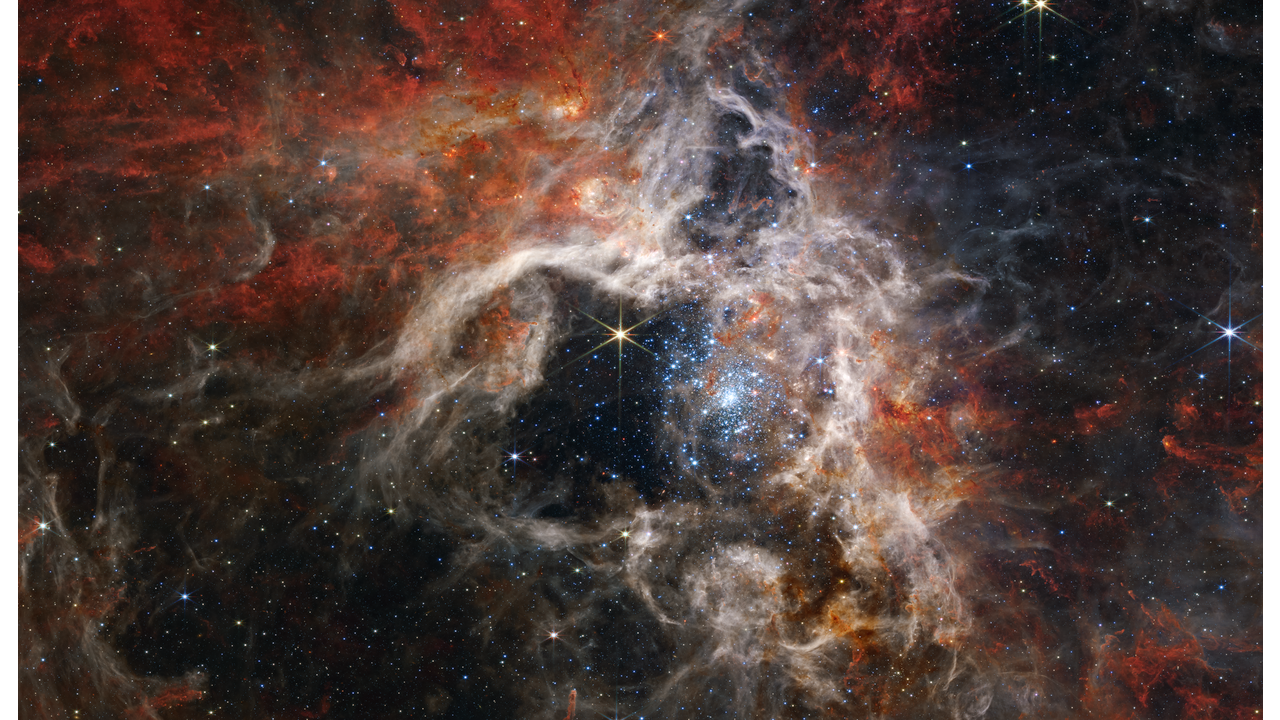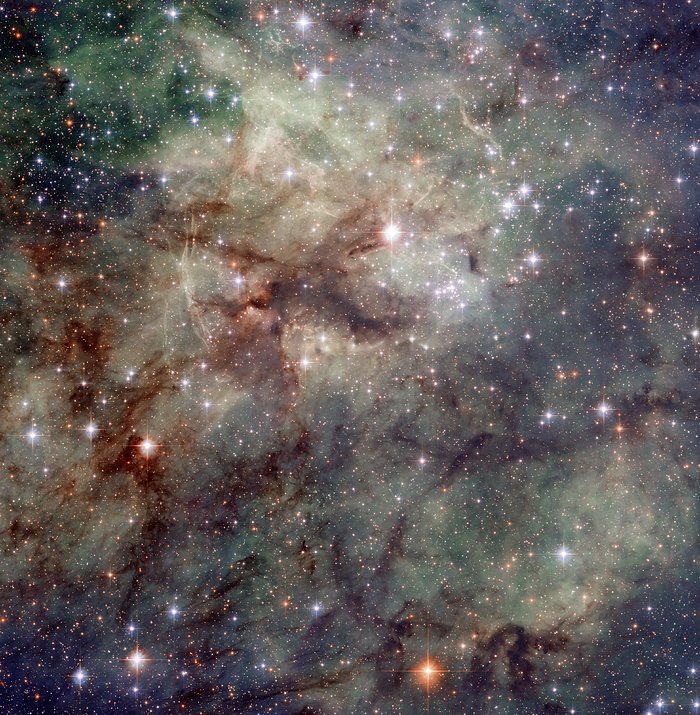It looks like you're using an Ad Blocker.
Please white-list or disable AboveTopSecret.com in your ad-blocking tool.
Thank you.
Some features of ATS will be disabled while you continue to use an ad-blocker.
12
share:
Eekkk !

The Webb team released this new image yesterday of the Tarantula Nebula , I don't like spiders but think this one is lovely.
The Tarantula Nebula is about 159,800 light years from Earth but Webb makes it look like it's next door , for comparison here's Hubble's view in 2011.


The Webb team released this new image yesterday of the Tarantula Nebula , I don't like spiders but think this one is lovely.
In this mosaic image stretching 340 light-years across, Webb’s Near-Infrared Camera (NIRCam) displays the Tarantula Nebula star-forming region in a new light, including tens of thousands of never-before-seen young stars that were previously shrouded in cosmic dust. The most active region appears to sparkle with massive young stars, appearing pale blue. Scattered among them are still-embedded stars, appearing red, yet to emerge from the dusty cocoon of the nebula. NIRCam is able to detect these dust-enshrouded stars thanks to its unprecedented resolution at near-infrared wavelengths.
To the upper left of the cluster of young stars, and the top of the nebula’s cavity, an older star prominently displays NIRCam’s distinctive eight diffraction spikes, an artifact of the telescope’s structure. Following the top central spike of this star upward, it almost points to a distinctive bubble in the cloud. Young stars still surrounded by dusty material are blowing this bubble, beginning to carve out their own cavity. Astronomers used two of Webb’s spectrographs to take a closer look at this region and determine the chemical makeup of the star and its surrounding gas. This spectral information will tell astronomers about the age of the nebula and how many generations of star birth it has seen.
webbtelescope.org...
The Tarantula Nebula is about 159,800 light years from Earth but Webb makes it look like it's next door , for comparison here's Hubble's view in 2011.

Beautiful image but I just dont see a spider in it for some reason?
a reply to: iamthevirus
Webb’s Diffraction Spikes are caused by a combination of its main mirror segments and the struts holding the secondary mirror.
stsci-opo.org...
As it's producing image quality like in the one above the Diffraction Spikes aren't really an issue for me.
Webb’s Diffraction Spikes are caused by a combination of its main mirror segments and the struts holding the secondary mirror.
stsci-opo.org...
As it's producing image quality like in the one above the Diffraction Spikes aren't really an issue for me.
new topics
-
Almost Home
Short Stories: 2 hours ago -
Kamala finally builds a wall...around her home in DC
Jokes, Puns, & Pranks: 3 hours ago -
Ok Melbourne, Really?
Music: 4 hours ago -
Predictions for the result
2024 Elections: 8 hours ago
top topics
-
Predictions for the result
2024 Elections: 8 hours ago, 11 flags -
Kamala finally builds a wall...around her home in DC
Jokes, Puns, & Pranks: 3 hours ago, 6 flags -
Almost Home
Short Stories: 2 hours ago, 6 flags -
Ok Melbourne, Really?
Music: 4 hours ago, 1 flags
active topics
-
Predictions for the result
2024 Elections • 85 • : TzarChasm -
KAMALA HARRIS and Democrats - Acts of Desperation with less than 25 days till Nov 5th 2024.
2024 Elections • 120 • : Vermilion -
-@TH3WH17ERABB17- -Q- ---TIME TO SHOW THE WORLD--- -Part- --44--
Dissecting Disinformation • 3102 • : McTech2 -
Almost Home
Short Stories • 2 • : JJproductions -
The Fight for Election Integrity Continues -- Audits, Criminal Investigations, Legislative Reform
2024 Elections • 4346 • : Vermilion -
Kamala finally builds a wall...around her home in DC
Jokes, Puns, & Pranks • 4 • : Hypntick -
Betting markets have Trump by a good bit
2024 Elections • 182 • : WeMustCare -
British Man Jailed for over 2 Years for Shouting at Police During Protest has Died in Prison
Social Issues and Civil Unrest • 29 • : gortex -
Trump thinks Liz Cheaney should be shot in the face?
US Political Madness • 106 • : YourFaceAgain -
Fraudulent Pennsylvania Voter Registrations Traced to Democat-linked Company: District Attorney
2024 Elections • 46 • : YourFaceAgain
12

